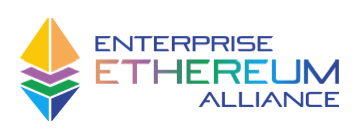by Tom Lyons
In our Ethereum Business Readiness Report, published last June, we highlighted the ongoing maturation of the public Ethereum ecosystem as a business platform. Recent events show these trends continuing.
“Enterprise blockchain is dead, long live blockchain for enterprises.”
So said Don Tapscott, noted blockchain influencer and founder of the Blockchain Research Institute (an EEA member), at a dinner I attended in Davos last January, during the World Economic Forum week.
Tapscott’s slogan aptly echoes a sentiment that we at the EEA have been hearing for some time: that there has been a significant movement in the industry towards open, public blockchains.
In our Ethereum Business Readiness Report, published last June, we highlighted that the move away from the private, consortia-based blockchain model in the Ethereum world was driven by the continued evolution of the Mainnet and the sustained growth of the Ethereum ecosystem.
In particular, the rise of Layer 2 solutions (L2s) has helped address performance, privacy, and security issues, which previously made private blockchains necessary for business use. We also concluded that, while all the pieces were in place for the business use of public Ethereum, they didn’t all fit together perfectly yet.
Since our report was published, the evolution of public blockchain technology has continued to progress, and the pieces are increasingly coming together. I would like to highlight four key developments that showcase the growing ability of public Ethereum to support decentralized business models:
- Last year’s crypto market crash put DeFi protocols to the test, and they demonstrated remarkable resilience. This performance not only highlighted the robustness of blockchain-based DeFi models but also reinforced their potential in decentralized commercial ecosystems.
- The Merge showed that Ethereum is well governed and technologically robust. The Ethereum Merge has significantly improved the sustainability and security of the Mainnet. It also showed that Ethereum is perfectly capable of developing and maintaining complex core infrastructure.
- The emergence of zkEVMs indicates that advanced privacy-preserving technology is coming into its own. Zero knowledge technology has long been touted as a means of bringing true privacy to transparent, public blockchains. This year, with the introduction of several zero-knowledge Ethereum Virtual Machines (zkEVMs), we have begun to witness the large-scale implementation of this technology.
- Regulatory certainty continues to come, if piecemeal. The recent introduction of the MiCa regulation in the EU has established a clear regulatory framework for digital assets and blockchain technology in one of the world’s most important regions. This development eliminates a significant barrier for businesses contemplating the adoption of blockchain in Europe and puts Europe on a par with many other jurisdictions around the world. In other areas, and in particular the US, clarity remains elusive. But the trend seems clear.
Private networks are becoming the Intranets of the blockchain era
This evolution towards public blockchains doesn’t necessarily mean that private blockchain networks are dead. In fact, there will always be a place for private networks in specific business use cases.
However, the approach towards private or invite-only setups is changing. Instead of relying on isolated, purpose-built blockchains operated by closed consortia, these private networks will be implemented as decentralized applications (dApps) or subnets running on a combination of Ethereum Layer 2 or Layer 3 solutions.
By connecting these networks to the public Mainnet to varying degrees, they become part of the greater Ethereum ecosystem. This approach is strikingly similar to how the Internet has evolved over time.
Just as private Intranets and permissioned websites coexist and are interoperable with the open, public Internet, private blockchain networks will continue to serve specific purposes while benefiting from being connected to the broader Ethereum ecosystem’s both in terms of technology and community.
These developments are paving the way for increasingly decentralized business models. Just as we have witnessed the rise of decentralized finance (DeFi), we can anticipate a similar movement towards decentralized supply chain, healthcare, manufacturing, and numerous other sectors.
In this way we continue to move step-by-step towards fulfilling Ethereum’s initial mission of building an open-source, publicly available, general purpose, decentralized transaction infrastructure for the planet.
